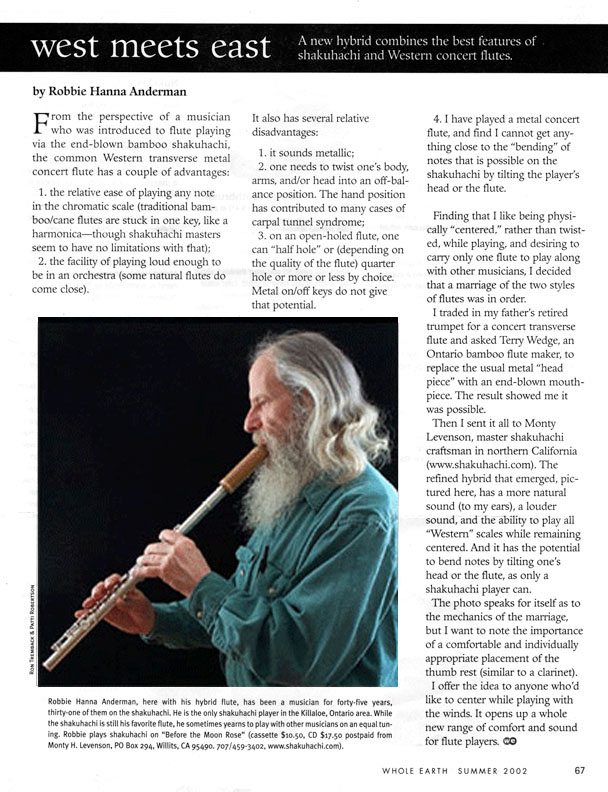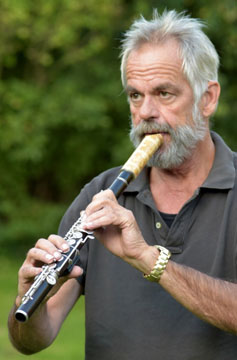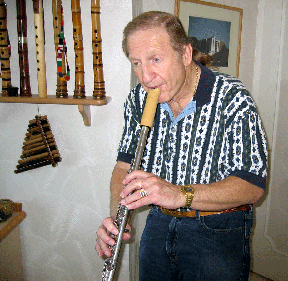
|
SHAKULUTE What People Say About The Shakulute
Page 5 |
"I have played the Shakulute on my old wooden flute for two months now. This flute is now so beautiful, it has blown my mind away. I have entered a completely new environment of performing. And I am discovering new musical experiences almost every day now. "Thank you very much for the effort making my shakulute and in former times, my shakuhachi." |
|
|
"As you know my arthritis has gotten to the point where it hurts me to hold my silver flute in a transverse position. Because of the enjoyment playing gives me, I hated the thought of having to give up playing the flute. Your vertical shakuhachi headjoint arrived a week ago. It is a marvel. For a week I have been able to hold the flute in a vertical position. I can play again. "But it gets even more amazing. Over the years I have had Powell and Hanes flutes. I have even had custom-made headjoints. When I ordered your headjoint I was just hoping it would play adequately. What a surprise. The flute plays even better than with its original silver headjoint. The sound is more resonant, fuller and responsive. The sound is louder. I have never been able to push that much air down a silver barrel before. My original thought was that this would be a good headjoint for some one who could no longer hold a transverse flute. I have changed my mind! It is a great headjoint for any one who wants to maximize the sound production out of a metal concert flute. " - Maynard Garfield, Naples, FL |
"Monty, I'm playing your Shakulute for 2 1/2 months, and I am very happy with it. The sound I'm now able to produce is amazing. Much bigger than my transverse headjoint, and also much more mystic. The tone of the Shakulute is so beautiful, I can play it for hours. I still like my transverse headjoint, I think the sound of the transverse headjoint is more precise, direct. To have them both is the best combination to get a wild range of tones, feeling, and atmosphere with the silver flute. I'm very glad to have discovered your instrument and have one. "Thank you very much for your advice and sympathy during my time of reflexion (before I decide to purchase it). Thank you also for the quality of your craftsmanship." - Justin Fournier, Switzerland |
West Meets East Whole Earth Review, Summer, 2002 |
 |
From the perspective of a musician who was introduced to flute playing via the end-blown bamboo shakuhachi, the common Western transverse metal concert flute has a couple of advantages: 1. the relative ease of playing any note in the chromatic scale (traditional bamboo/cane flutes are stuck in one key, like a harmonica--though shakuhachi masters seem to have no limitations with that); Finding that I like being physically "centered," rather than twisted, while playing, and desiring to carry only one flute to play along with other musicians, I decided that a marriage of the two styles of flutes was in order. I traded in my father's retired trumpet for a concert transverse flute and asked Terry Wedge, an Ontario bamboo flute maker, to replace the usual metal "head piece" with an end-blown mouthpiece. The result showed me it was possible. Then I sent it all to Monty Levenson, master shakuhachi craftsman in northern California (www.shakuhachi.com). The refined hybrid that emerged, pictured here, has a more natural sound (to my ears), a louder sound, and the ability to play all "Western" scales while remaining centered. And it has the potential to bend notes by tilting one's head or the flute, as only a shakuhachi player can. The photo speaks for itself as to the mechanics of the marriage, but I want to note the importance of a comfortable and individually appropriate placement of the thumb rest (similar to a clarinet). I offer the idea to anyone who'd like to center while playing with the winds. It opens up a whole new range of comfort and sound for flute players. |
What People Say About the Shakulute |
|||||
Page 5 |
|||||

 "
"